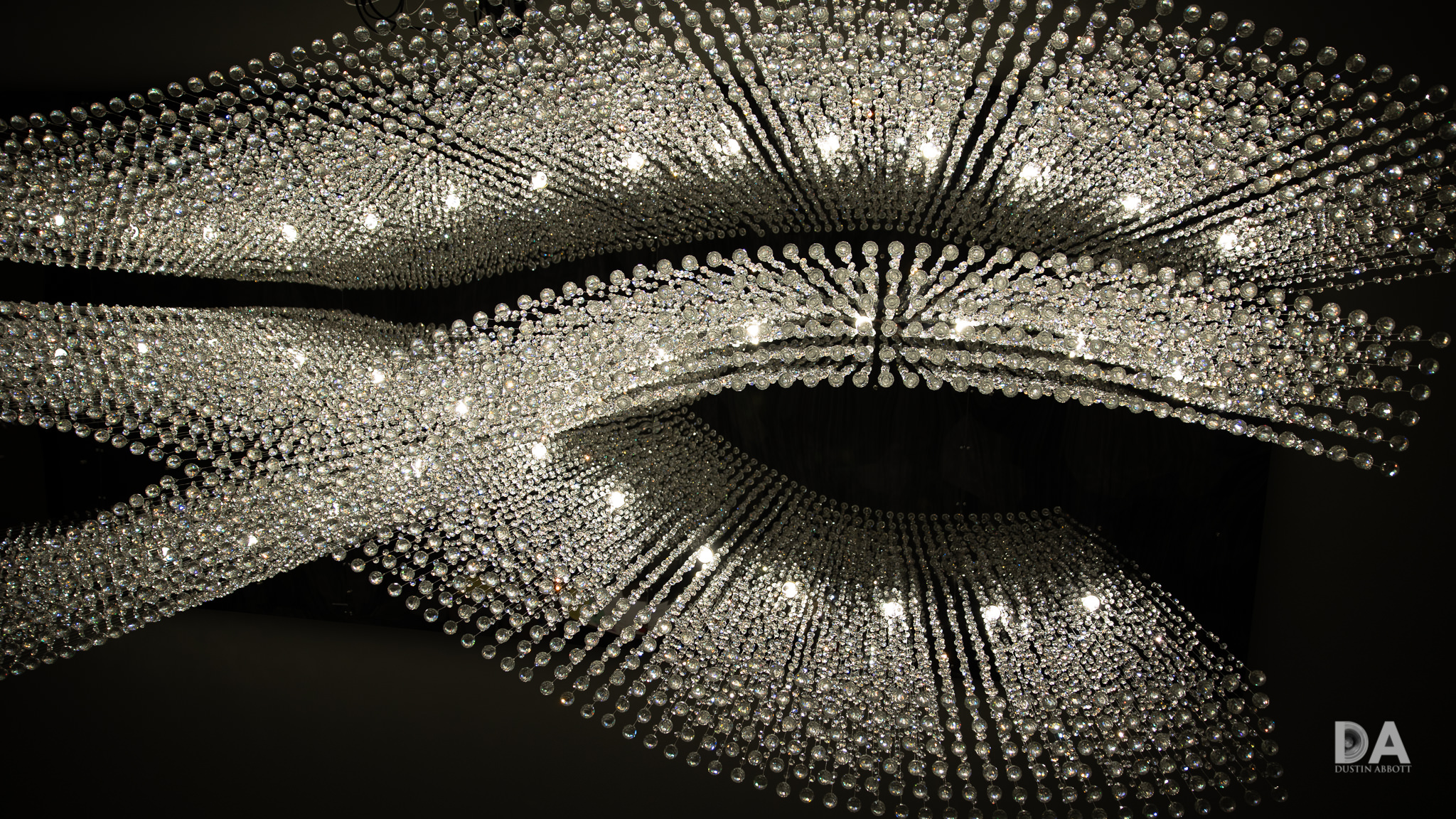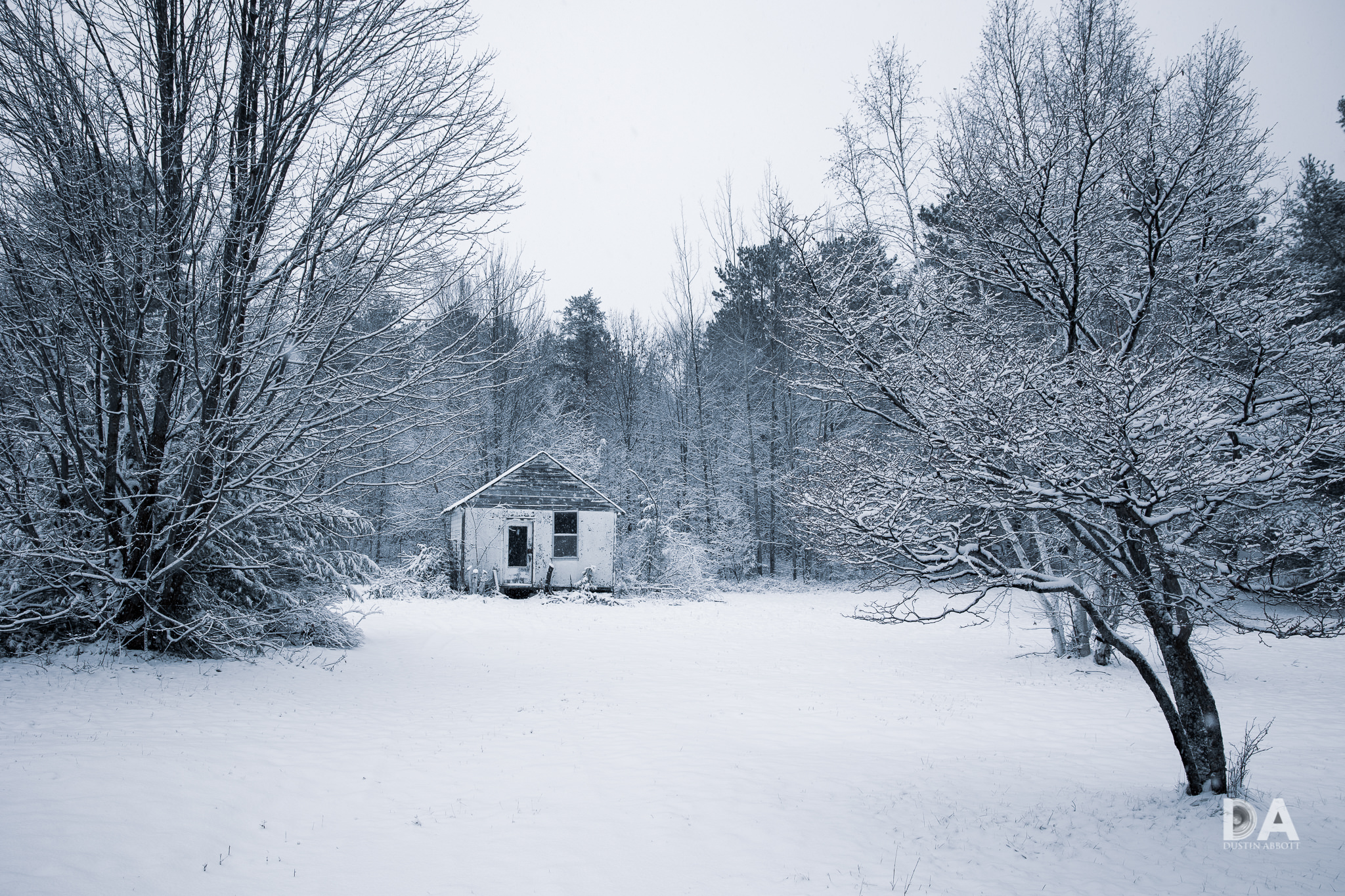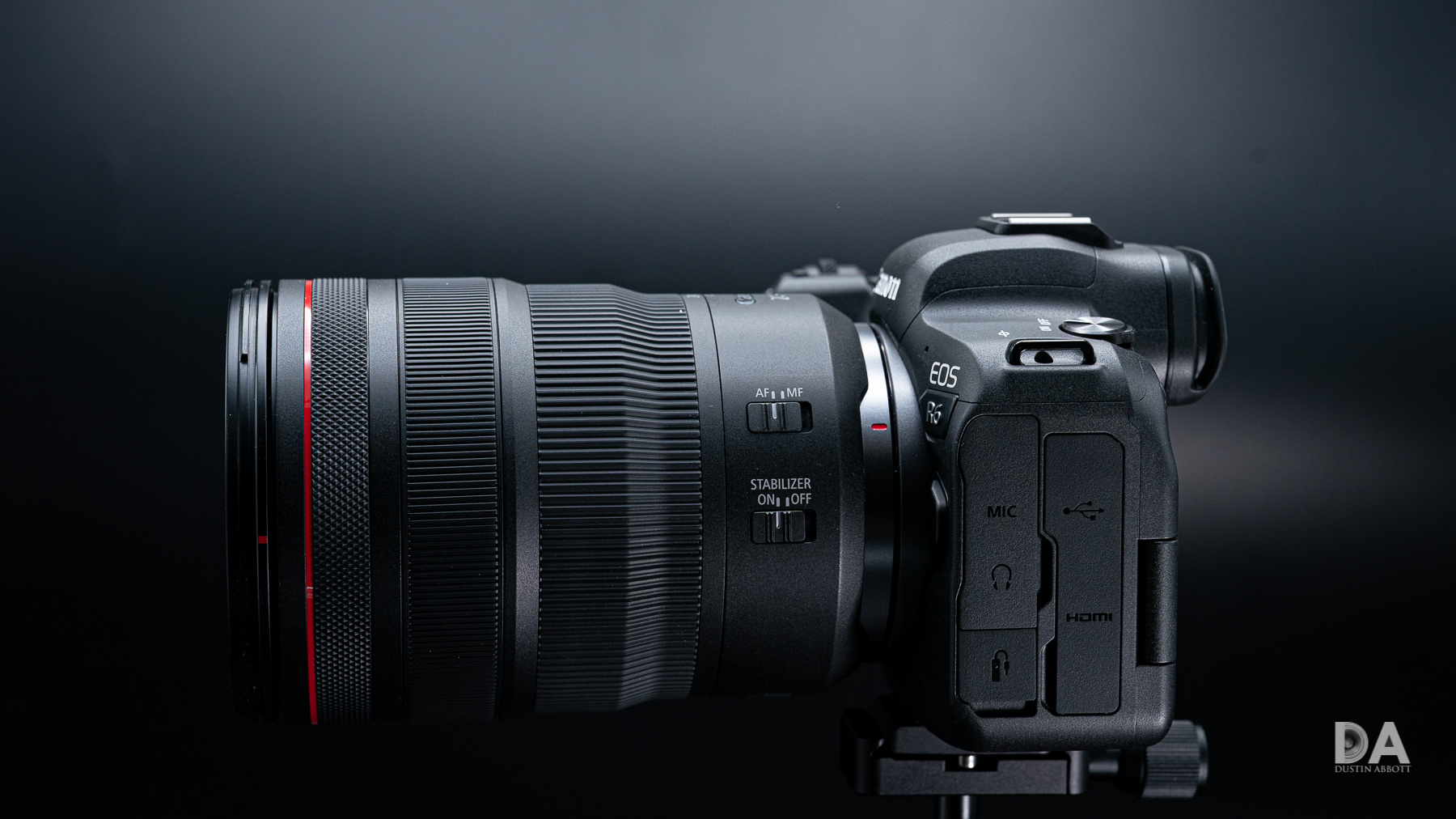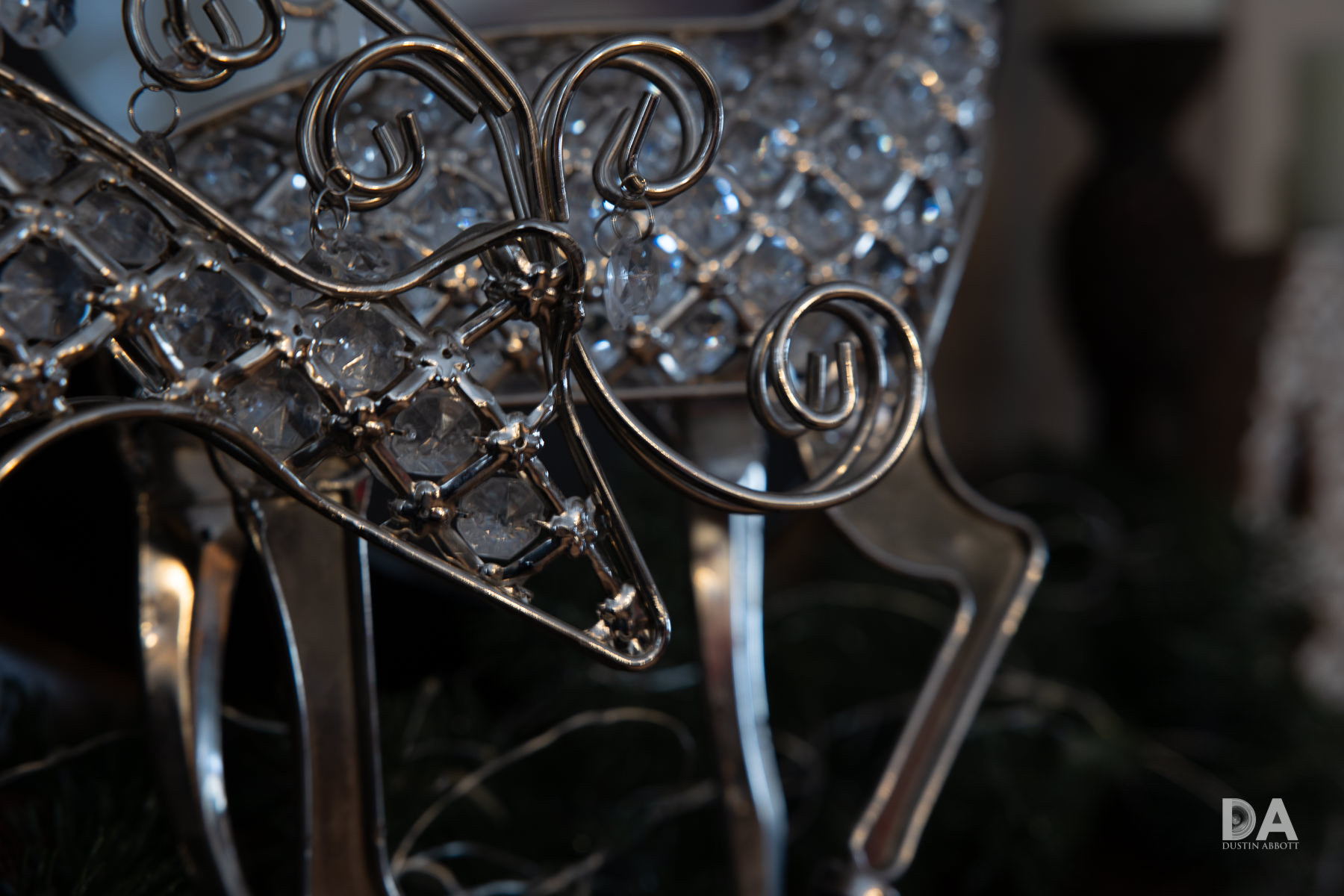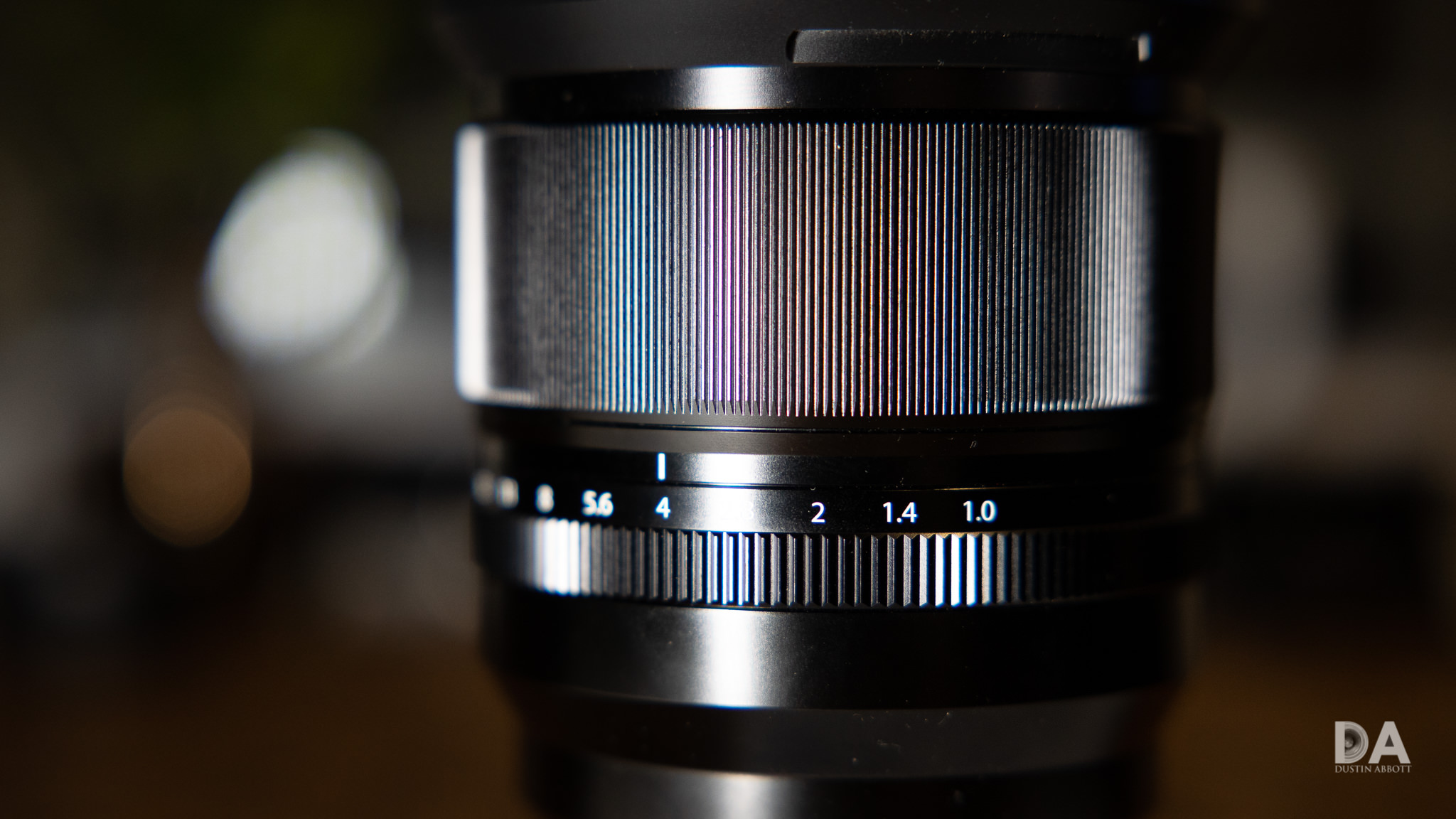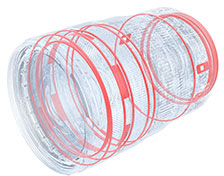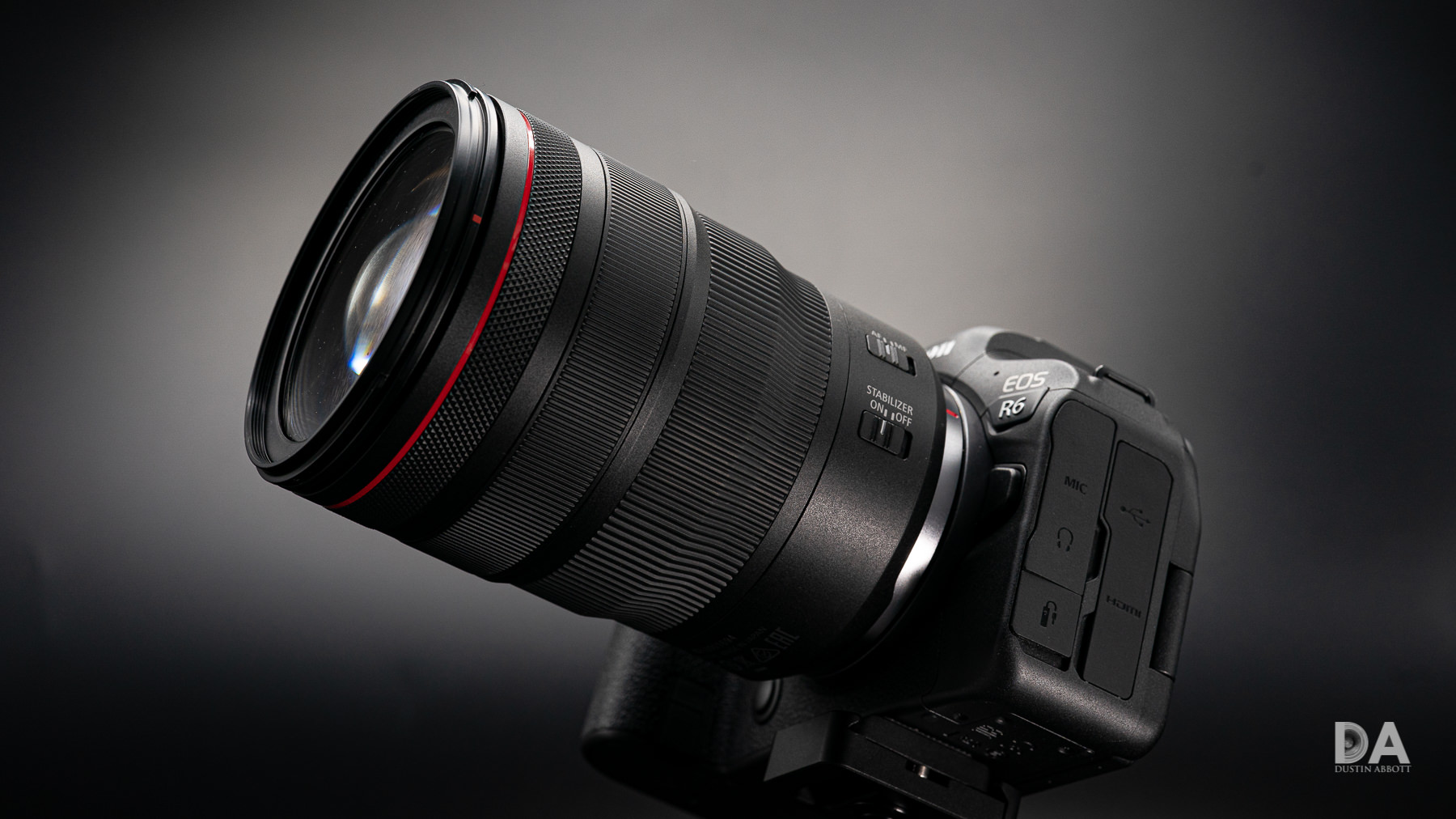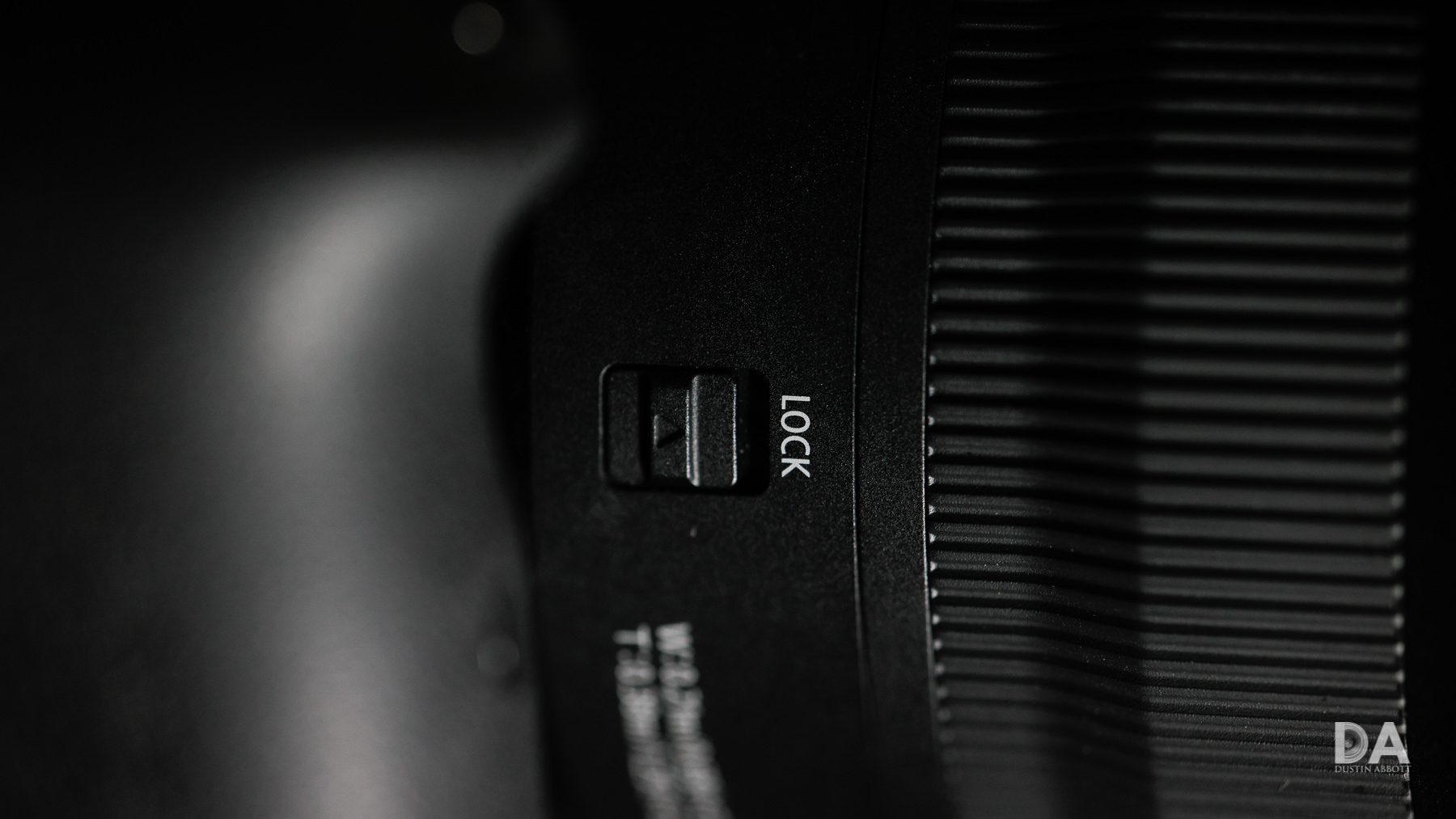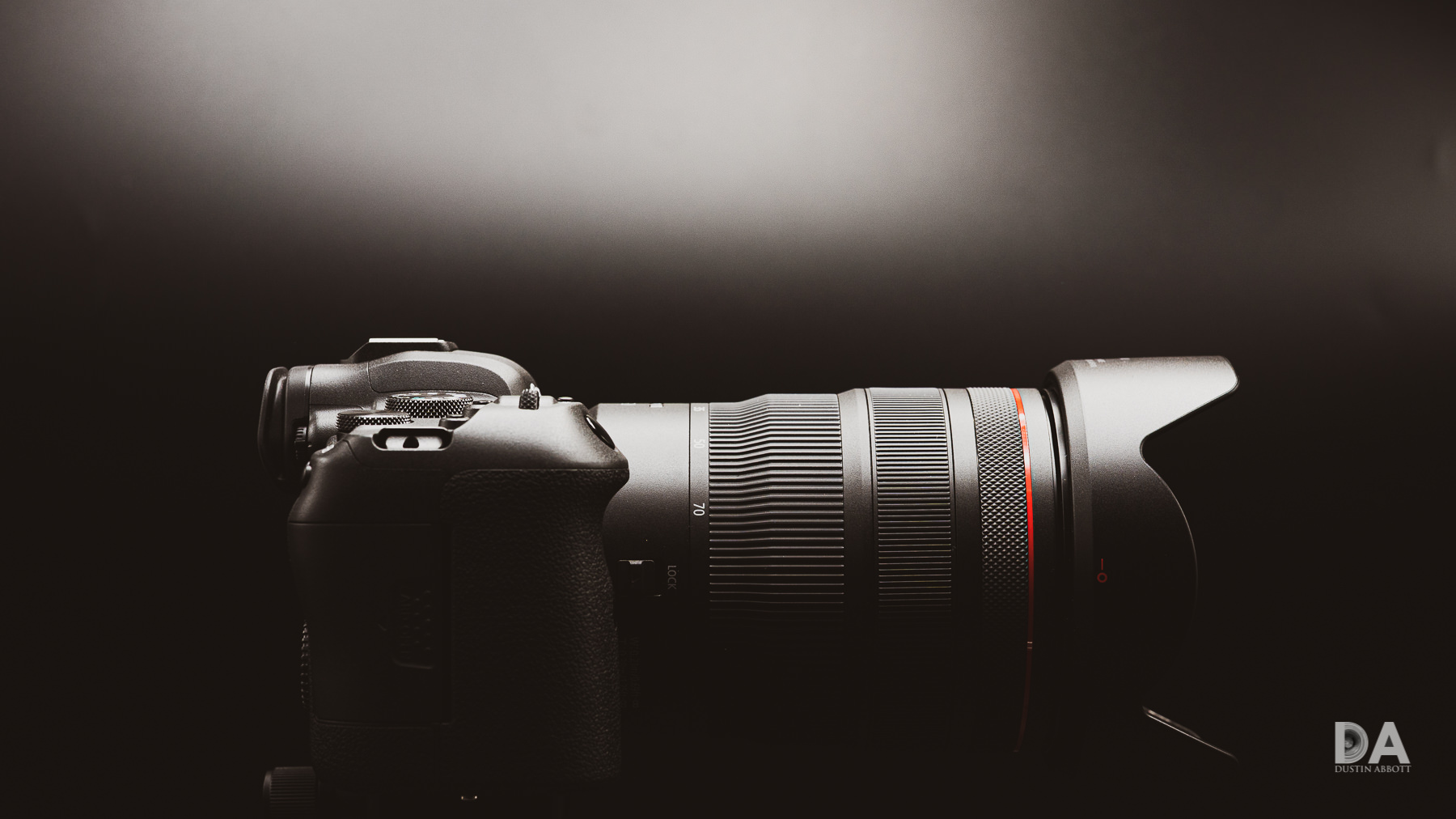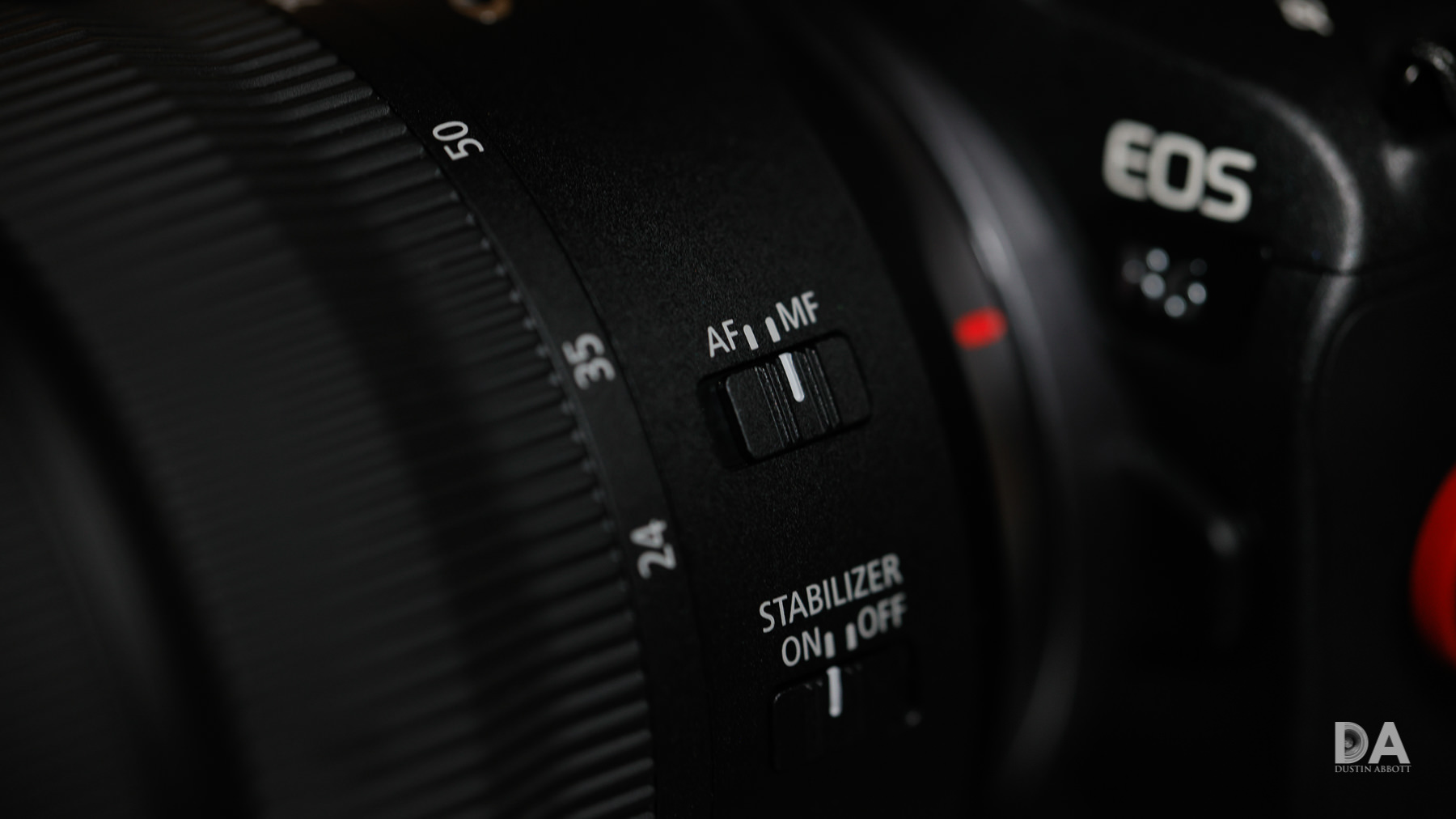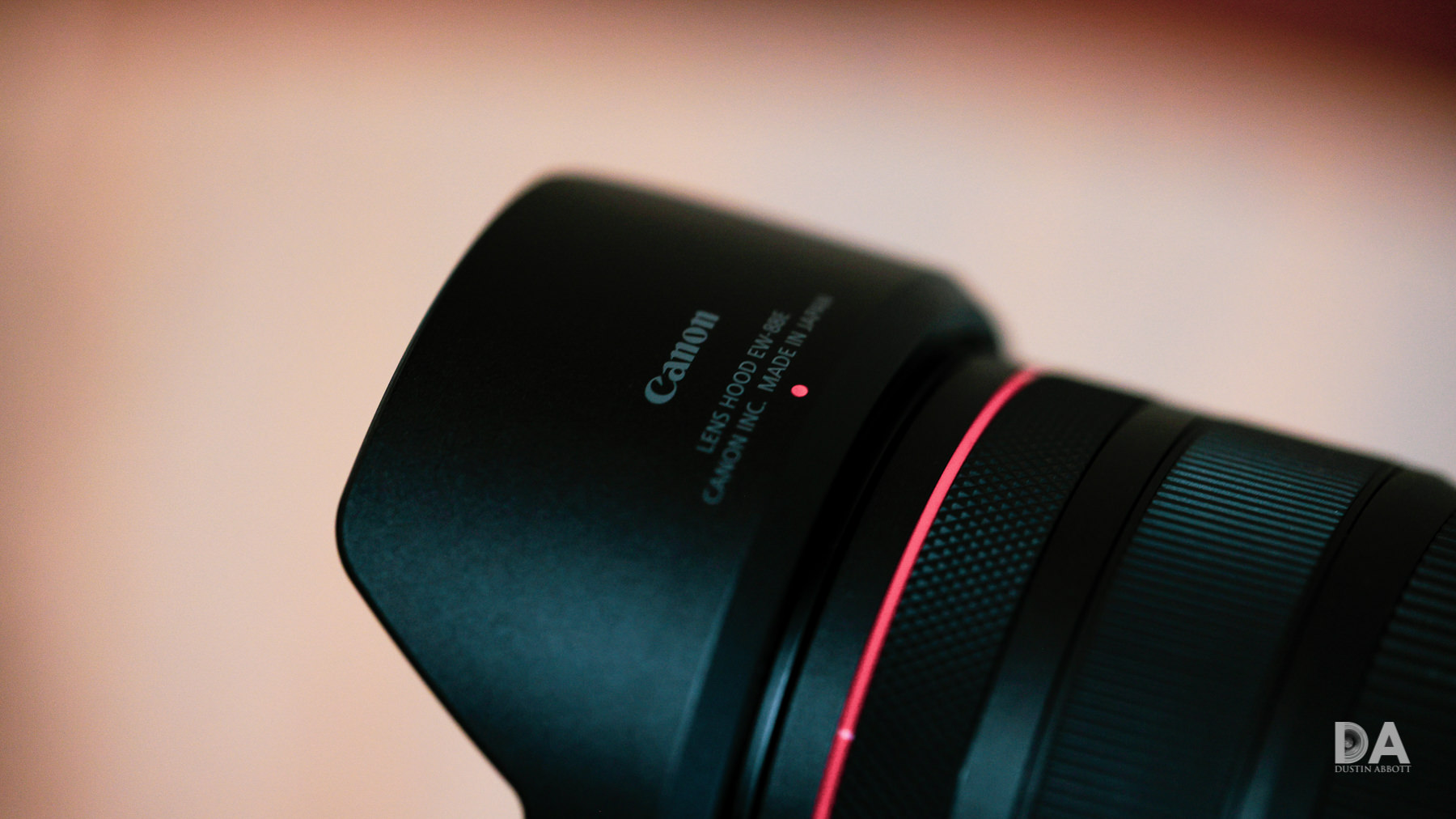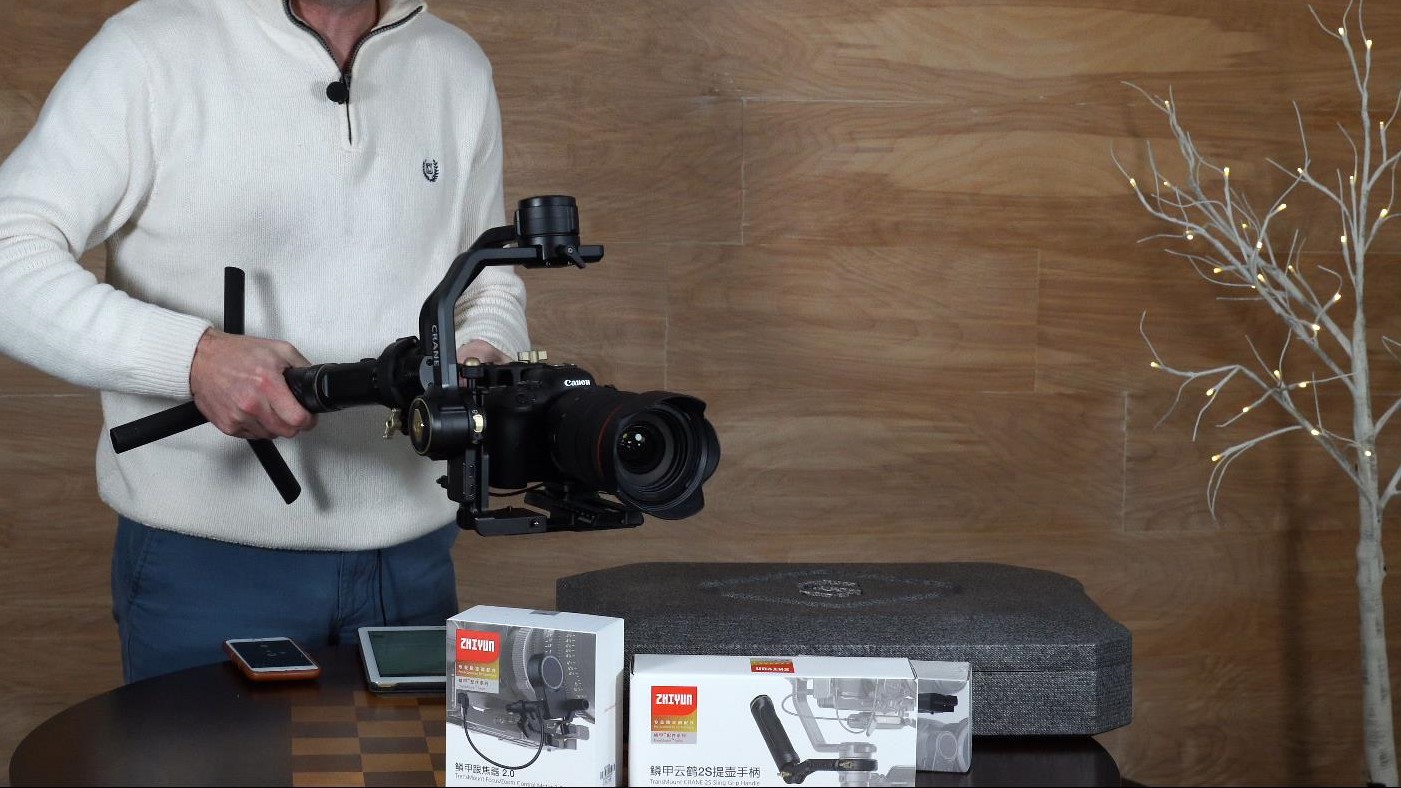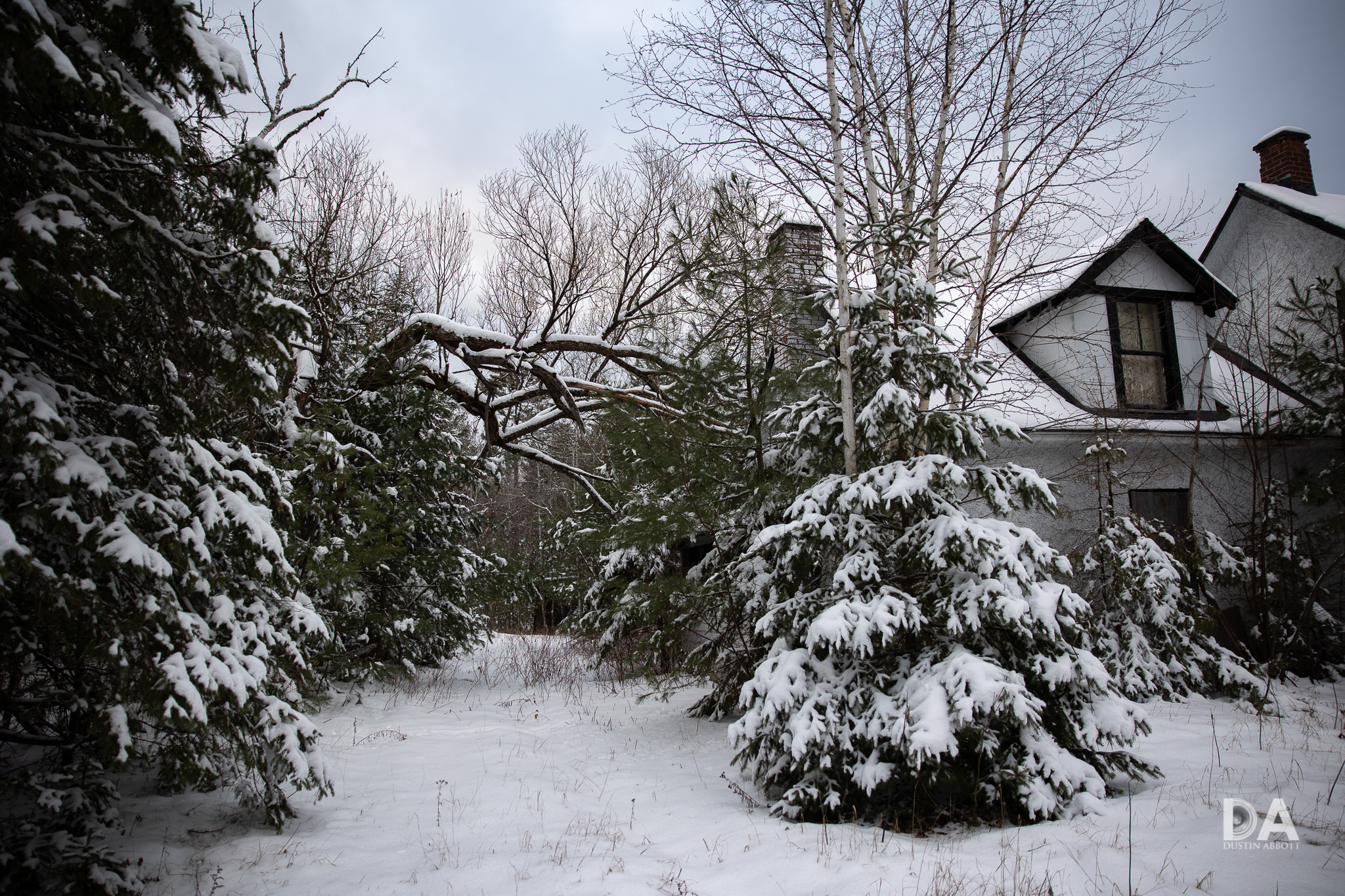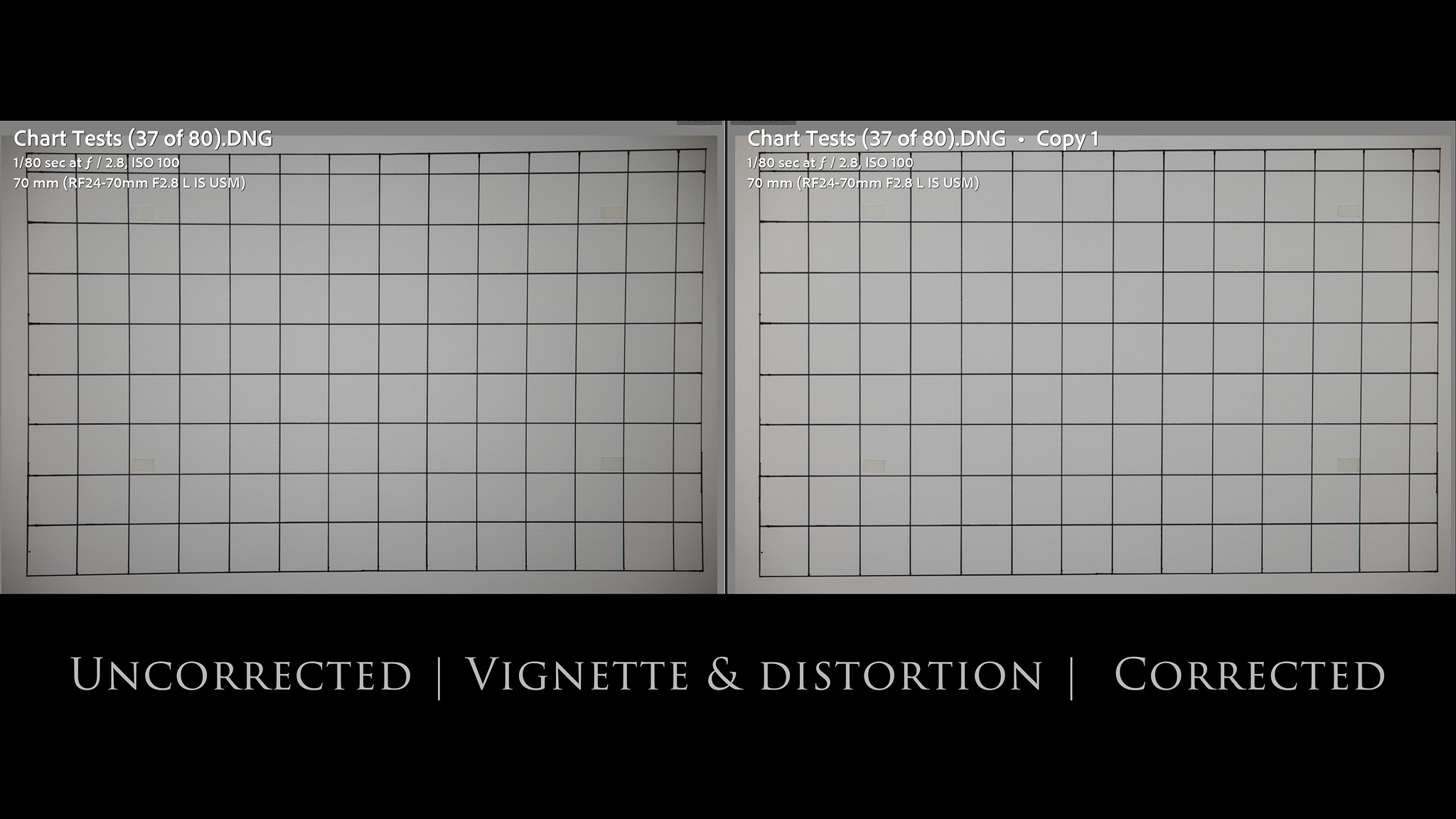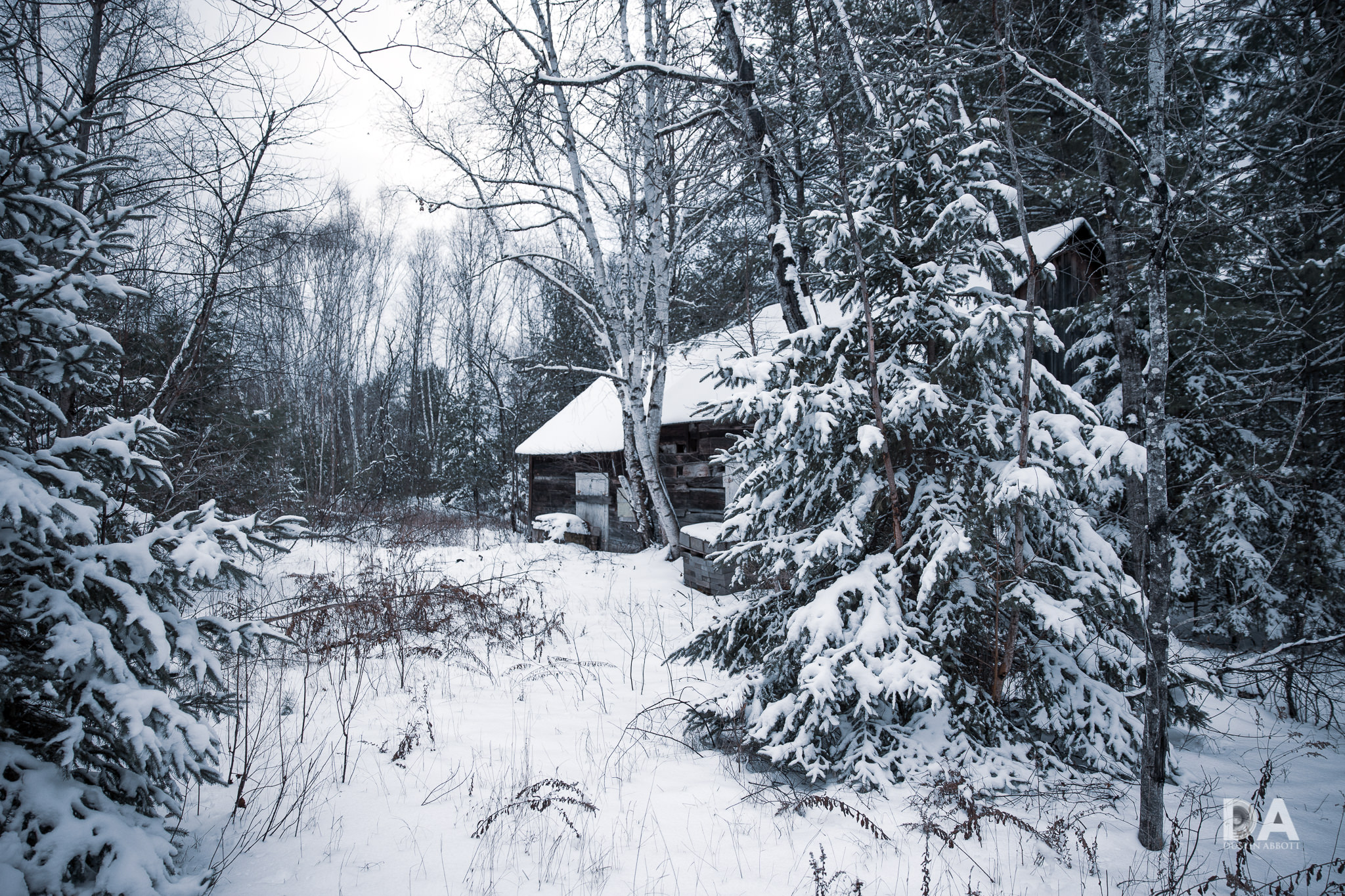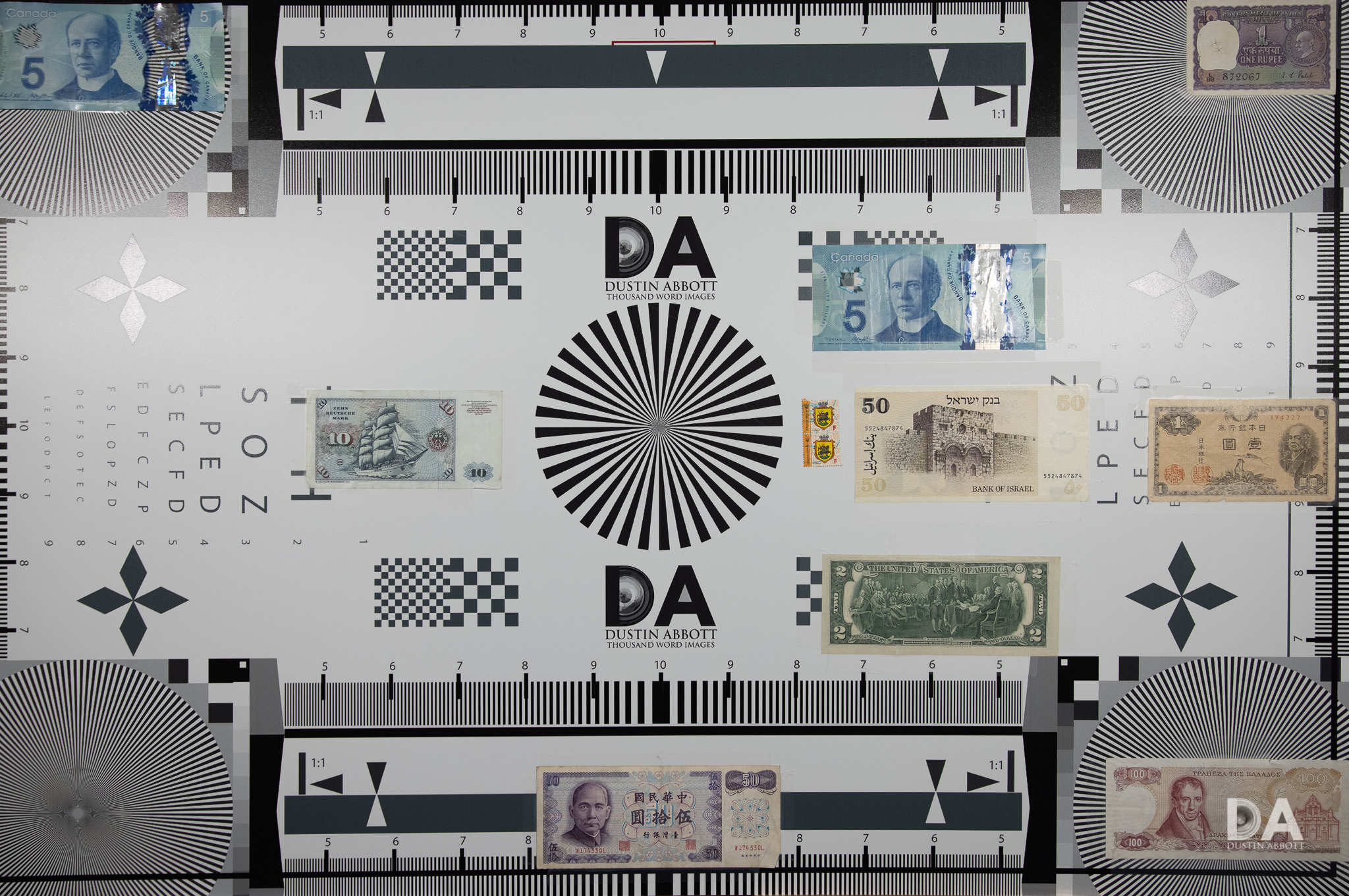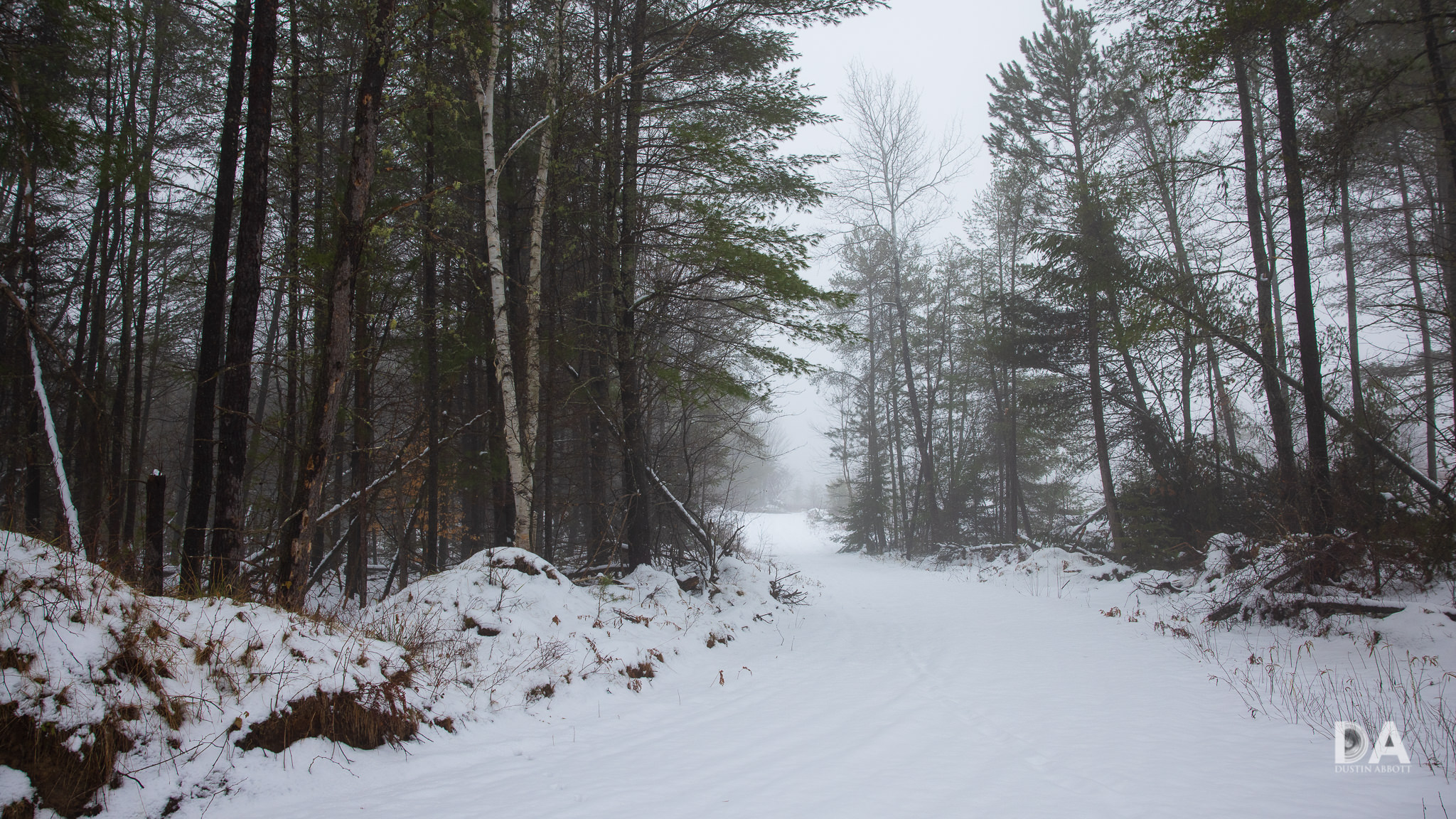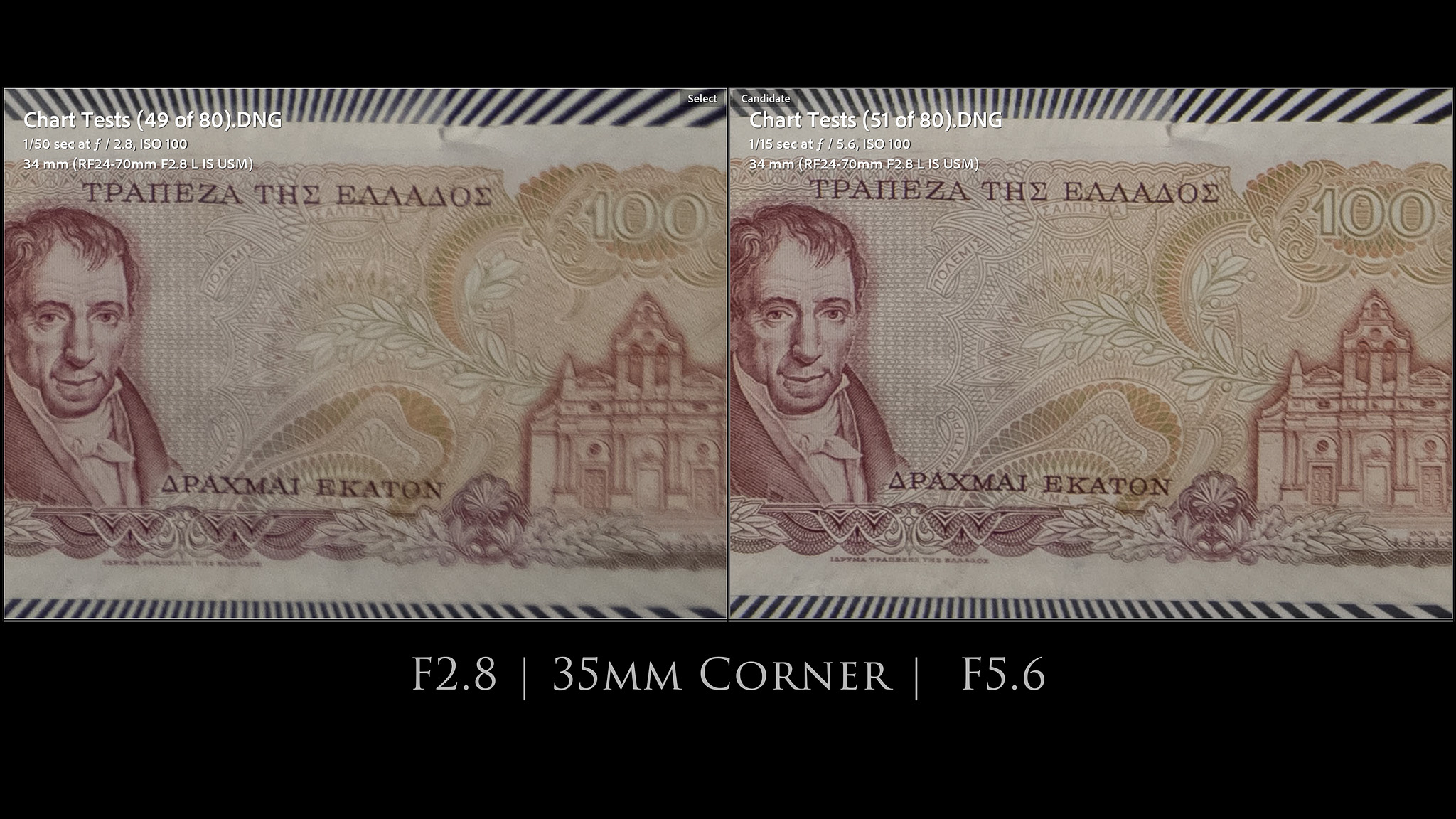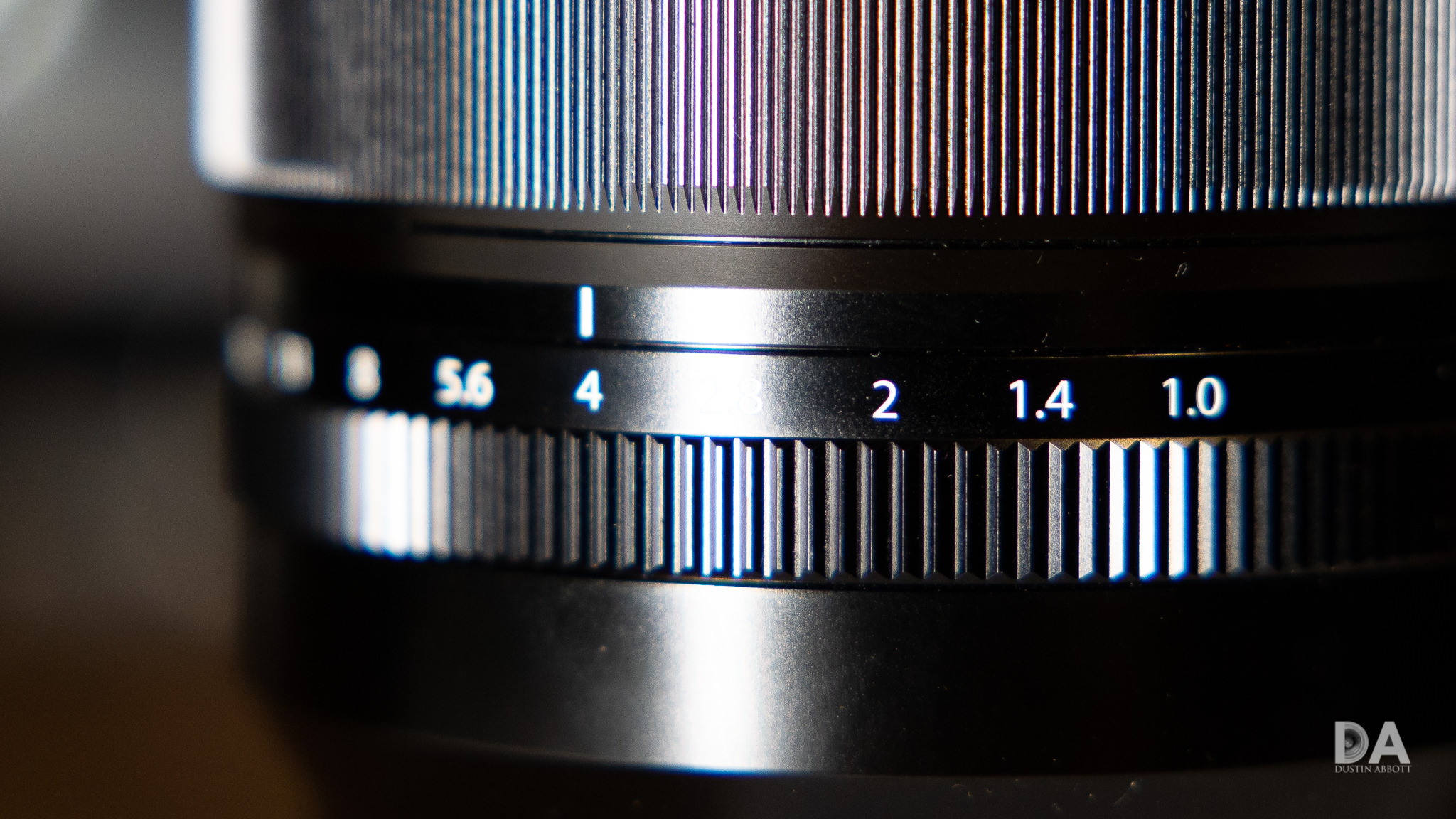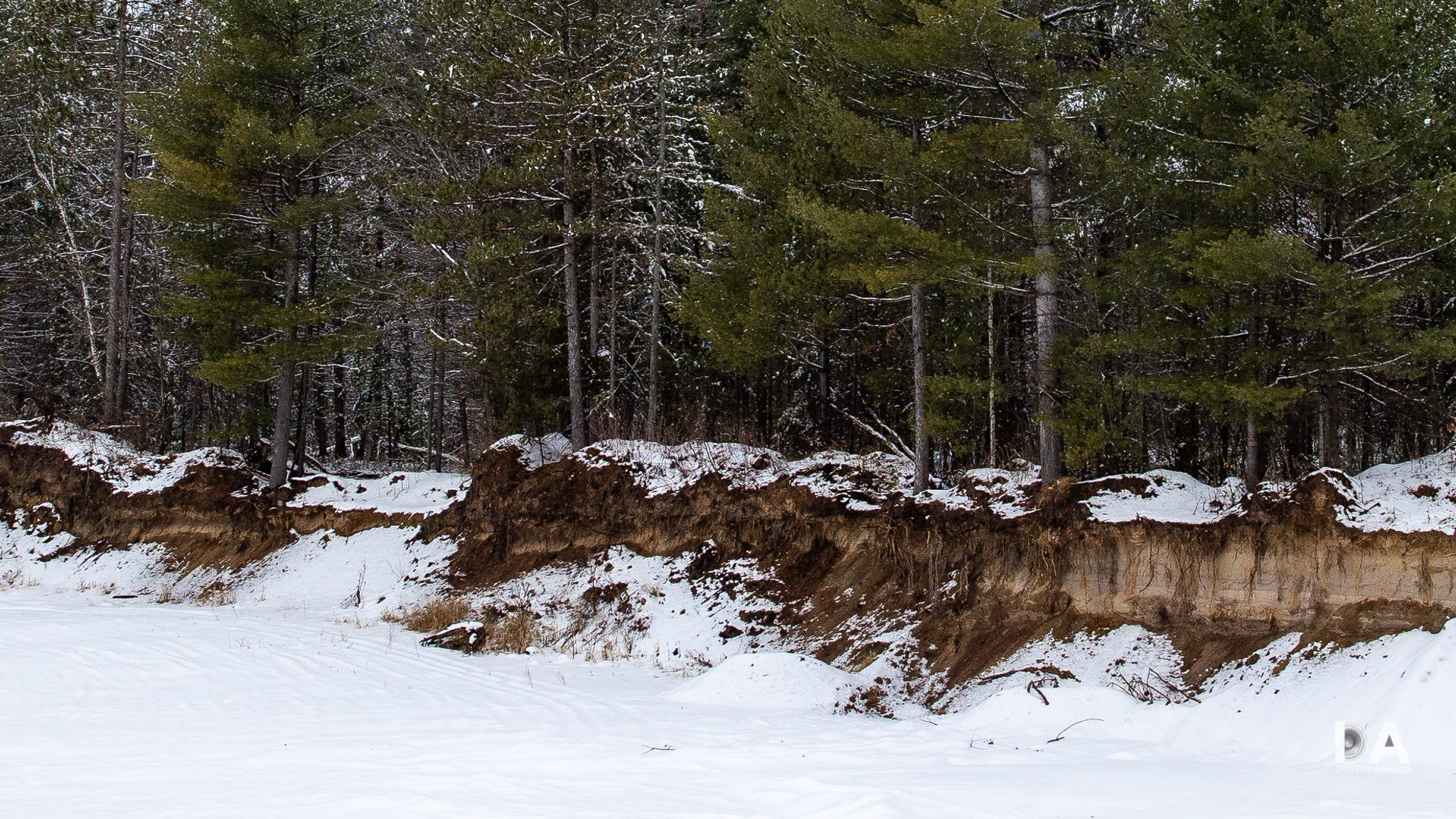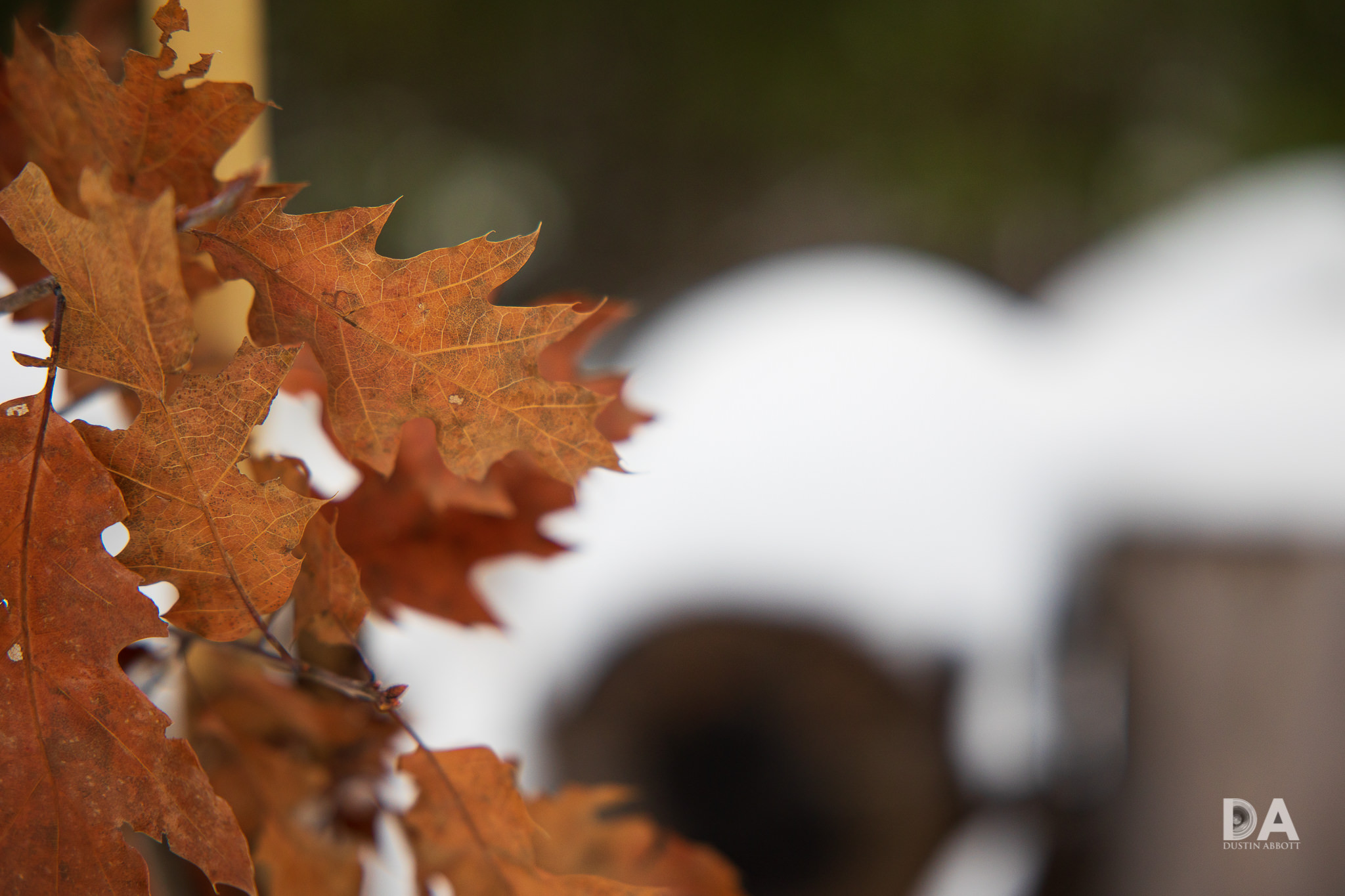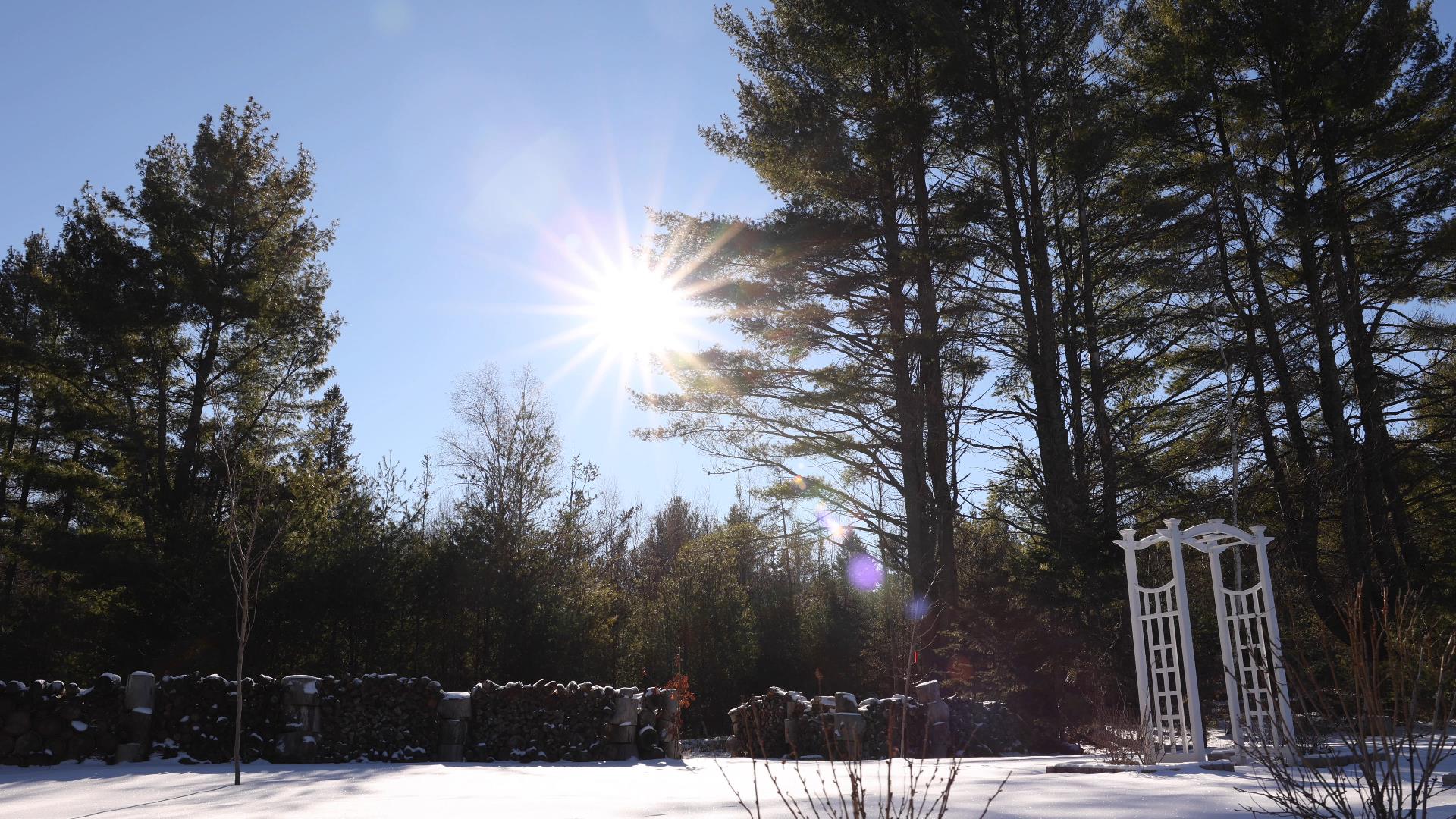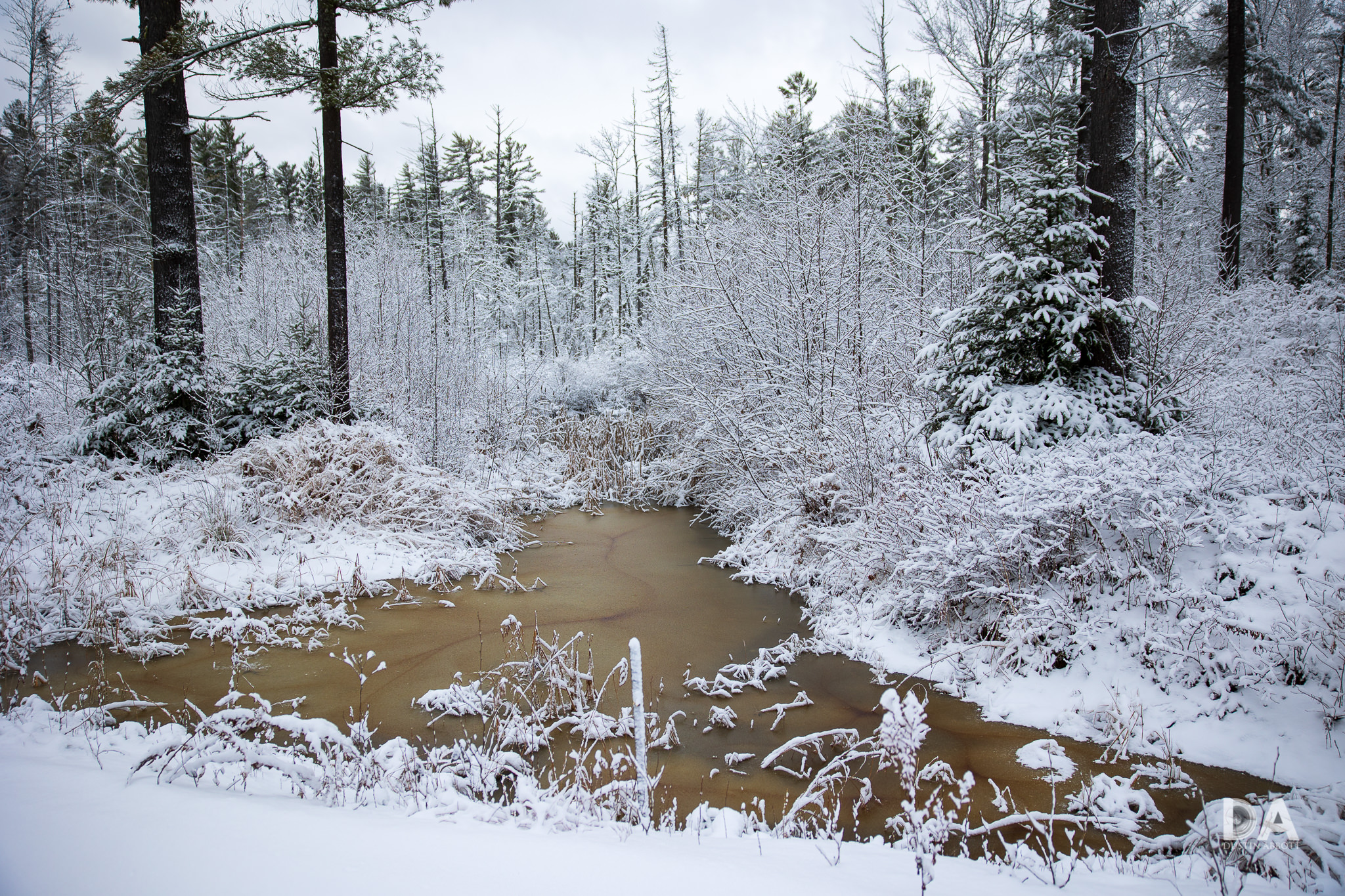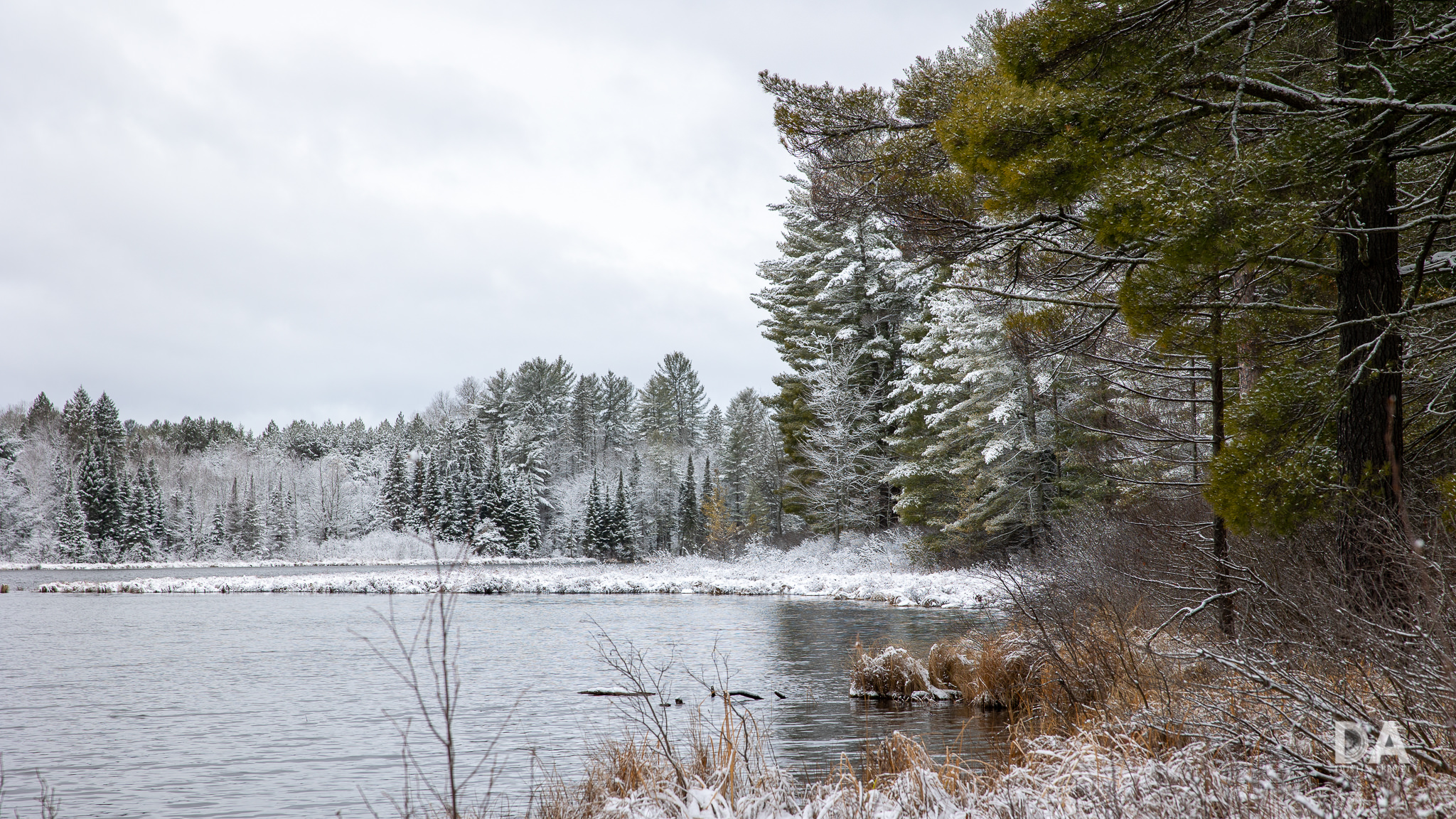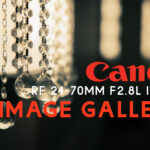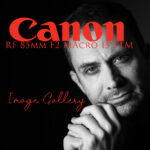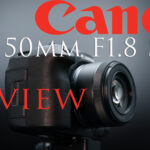It is close to universally accepted that the greatest strength of Canon’s new full frame mirrorless system has been the RF mount. Canon’s new RF mount has unleashed Canon’s creativity and ability to do things they couldn’t before. I would argue that the new EOS R5 (my review here) and EOS R6 (my review here) are also great strengths, with the EOS R5 serving as my new favorite camera. But there is no question that many (not all!) of Canon’s new RF mount lenses bring either new innovation or higher performance than what we’ve previously seen. In the past, for example, one had to choose between wider maximum aperture (EF 24-70mm F2.8L II) or having an image stabilizer (EF 24-70mm F4L IS), but the new mount mount along with superior communication ability has allowed Canon to give us the Canon RF 24-70mm F2.8L IS, a lens that has both the wider maximum aperture (F2.8) and the Image Stabilizer (an effective 5 stop stabilizer). In fact, if you pair the RF 24-70mm with the new EOS R5 or EOS R6, you can actually get an rated 8 stops of stabilization (according to Canon). There’s certainly enough stability there to make handholding video and getting decent VLOG results easy, though movement in video (walking, for example) will always work a little better when utilizing a gimbal. There are few lenses more useful than a good quality standard zoom, and that definitely applies to the RF 24-70L (as we’ll refer to it for brevity in this review).
The RF 24-70L is the “standard” member of the “trinity” of wide aperture, professional-grade zooms for Canon’s relatively new full frame mirrorless ecosystem built around the RF mount. It’s not by accident that some of the earliest lenses to come in the RF mount were the 24-70mm, the RF 15-35mm F2.8L IS, and the RF 70-200mm F2.8L IS, as these constitute the common tools of the trade that many photographers who actually earn a living by photography will use. A standard zoom that covers wide angle to short telephoto like the 24-70mm is one of the most useful lenses available for wedding or event photographers. It also is going to be a very important lens for landscape photographers and even for journalists. Canon’s EF 24-70L II was an excellent lens (my review here), and Canon has built upon that foundation by giving us an even more useful lens with a bit more image sharpness, excellent IS and autofocus, and even a higher magnification figure for close up work.
As has been commonly the case with Canon’s RF mount lenses, the price tag is not cheap, nor is the lens small. Canon has taken the “Sigma route” with a lot of their major RF lenses and have focused on performance with little regard for size and weight. The RF 24-70L is the heaviest lens in the class and will will set you back $2300 USD, which is expensive no matter how you slice it. The RF 24-70L is an excellent lens and is extremely useful, but, at the end of the day, that price is going to be the greatest limiting factor for many potential buyers, though, at this stage, there are few alternatives available in a native RF mount. So should you take the plunge on this big, expensive lens? It is my hope that this review will help to answer the questions you might have about this lens and help you make an informed decision as to whether the RF 24-70mm is the lens for you.
Want to watch your reviews instead? Check out either my long format definitive review or shorter standard video reviews.
Follow Me @ Patreon | My Newsletter | Instagram | Facebook | Twitter | Flickr | 500px
Thanks to Camera Canada for getting me a loaner of the RF 24-70mm. If you’re in Canada, check them out for a reliable online retailer.
Canon RF 24-70L Build, Handling, and Features
My first impression of the RF 24-70L upon taking it out of the box was similar to my reaction to the RF 15-35mm F2.8L IS: “That is a big lens!”. The early perception that mirrorless was the space for small and compact often goes out the window when you start to talk about pro-grade full frame lenses, and the RF 24-70L is actually larger and heavier than the EF 24-70mm F2.8L II…and the alternate lenses on mirrorless from Sony and Nikon.
The Sony GM is a slightly longer (but also a bit narrower lens) and is also the closest to the RF 24-70L in weight (886g vs 900g). Both the Nikon Z and Canon EF mount lenses weigh in at a slightly lighter 805g. The physical size of all these lenses is fairly similar, and the RF lens is (D x L) 3.48 x 4.95″ / 88.5 x 125.7 mm. To be fair, however, the RF lens is the only one of the bunch that includes a stabilizer in the lens, with the Sony and Nikon versions relying on the in-body-image-stabilization of their camera systems.
This does raise an interesting question, as Canon was a strong proponent of in-lens stabilization vs sensor stabilization, though now they seem to have full embraced sensor stabilization in their newest cameras. I’ll add this: I’ve never actually perceived a combination of a lens with IS combined with IBIS actually providing an advantage over lens-only stabilization, though Canon suggests a full three extra stops are available through the combination of lens IS and camera IBIS on the R5 or R6. I was able to successfully handhold a half second exposure at 70mm about one third of the time.
The result is not flawless, but acceptably free from blur. This is a 5 1/3 stop advantage due to stabilization. According to the math, however, I should be able to handhold a roughly 3 second exposure, and that certainly is NOT happening for me, though I could get a slight better result if focusing on a distant subject. There’s too much movement when the shutter is released to handhold anything at a second or longer for me, though, as they say, “your mileage may vary”. To me the true value is on the video front, where I can do everything from vlogging and holding static video shots with great success. As noted, walking and filming is not quite gimbal smooth, but for quick run and gun footage it works. If you want to explore a great gimbal, I was really impressed recently by the Zhiyun-Tech Crane 2S in my review. As for stabilization, I always add this caveat: no kind of lens or camera stabilization will stop the movement of your subject, so if your subject moves, the only effective way to stop the motion is by keeping your shutter speed up.
As I noted in the introduction, Canon has managed to improve the minimum focus distance and maximum magnification of the lens, though mostly through a similar technique that Tamron has recently used, namely designing the lens with different minimum focus distances from the wide and telephoto ends. You can focus down as closely as 21mm at the wide end, though once you subtract the length of the lens and the distance to the sensor (about midway through the width of the camera), you are only left with a working distance of 7-8cm. If you have a hard time visualizing that, simply know that you will barely have room for the lens hood to be attached without it touching the subject. But interestingly the fine print from Canon reveals that the maximum magnification figure of 0.30x actually comes at 32mm. That’s a very random spot in the zoom range, and makes achieving that figure more awkward that what I would like. Here’s what that looks like:
Field curvature and distortion will mean that you won’t get a very flat plane of focus up close. Zooming in to 70mm (a more convenient place to try to get close to things) gives you a MFD of 38cm. You can’t get as close, but the end result won’t be as distorted and looks a little more natural.
That magnification figure looks to be somewhere around 0.23x or so, which is still quite useful. While the amount of distortion is diminished, the plane of focus is still not particularly flat, so you’ll find a huge variance between the performance in the center of the frame and out towards the edges, which are blurred as if they weren’t in focus.
I was more impressed with close up performance on the 24-70mm than I was on, say the 15-35mm. Shots have good detail and contrast and bokeh is fairly nice.
What didn’t fall short of my expectations, however, is the build. Canon has always delivered tough, durable L series lenses that have continued to serve photographers well for years…and even decades. I’ve got an L series lens or two that has passed the decade mark for me and still look and function basically like new. Here’s the high points that Canon details about the build and weather sealing on the RF 24-70L:
“Dust- and Weather-resistant
For reliable performance even when weather conditions get difficult, the RF 24-70mm F2.8 L IS USM lens features a dust- and weather-resistant construction in the lens mount, switch panel and all rings. Sealing is applied to lens joining sections, and switch panels to help prevent water and dust from entering into the lens.
Fluorine Coating
The RF 24-70mm F2.8 L IS USM lens features fluorine coatings on the front and rearmost surfaces to help prevent dirt and dust from sticking to the lens, making it easy to clean smudges and fingerprints off.
High Reliability and Durability for Professional Use
The RF 24-70mm F2.8 L IS USM lens is built to endure the rigors of professional use. Constructed to be rugged, refined and precise, it can be operated intuitively so concentration can remain on the subject at hand.
Vibration Shock Resistance
Engineered to accommodate its optical system, the RF 24-70mm F2.8 L IS USM lens features L series level vibration shock resistance in the lens barrel, helping to maintain focus and settings even in turbulent situations.”
While this is Canon’s own language, I feel no need to dispute it. Teardowns of recent L series lenses have shown them to be well engineered, having both good sealing and a structural design inside that allows them to take some knocks without becoming decentered. The outer shell is also durable, resistant to marking or scratching. The matte finish is also resistant to finger prints, so I find that the look of the lens stays consistent (it doesn’t look one way when cleaned and unused and another if you actually take it out of the box and use it!)
The lens’ inner barrel does extend by nearly 4 cm when zoomed out to the 70mm, though the zoom extension is both smooth and stable. I encountered no inconsistencies in the tension on the zoom ring, and consider it to be about right.
There is a zoom lock mechanism close the lens mount on the right side of the barrel. I never actually felt I needed it during my review period.
The lens has three rings on it, starting with a wide, tapered zoom ring, which flows into a thinner manual focus ring. The feel of the manual focus ring is mostly distinguished by not being wide and tapered nor having the diamond pattern finish of the control ring near the front of the lens. Canon has wisely maintained the unique texture of the control ring across various lenses, which helps because its location varies from lens to lens.
The control ring can have a variety of functions assigned to it from the camera body. You can use it as an aperture ring, exposure compensation dial, or any number of other functions. It is “clicked”, but Canon will “declick” it for video work for a fee.
There are two switches on the side of the barrel. One is a simple AF/MF switch, while the other is an ON/OFF for the stabilizer.
The RF 24-70L does ship with a lens pouch and the lens hood. The lens hood is petal shaped and pretty standard, including a locking mechanism to keep the hood from shifting.
All told, the RF 24-70 met my expectations for the build and handling of one of Canon’s L (Luxury) lenses. Other than it’s size and weight, I have no other real complaints. The lens feels well made and worked exactly as I expected it to over my roughly one month review period.
Canon RF 24-70mm F2.8L IS USM Autofocus Performance
Canon has given the RF 24-70L their Nano-USM focus system. I’m a fan of Nano-USM, as it is typically fast and quiet. It’s not a focus system that will work with all lenses (it doesn’t seem to have enough torque for lenses with very large elements like the 50mm or 85mm F1.2L RF lenses), but clearly works just fine in an application like this. The good news is that focus here is very fast, very quiet, and, in my tests, very accurate.
Standard focus changes happen near instantaneously, and I heard next to no sound in normal focus operation. When I did my standard focus pull test for video, I could hear some slight clicking during major focus changes, but I didn’t hear any focus noise during normal clips with less focus changes and a little more environmental sound.
I can’t recall any focus issues over the course of my review period (on both the R5 and R6 bodies). Focus was consistently excellent, and the great focus systems on Canon’s newest cameras make photography so intuitive.
Strong low light performance from the camera and lens makes this a great option for dimly lit venues for weddings or other ceremonies.
Eye AF also worked well to detect eyes of either human or animal subjects and track them in real time. On this shot, Eye AF would flicker over to the many cords in the way if my dog looked away or blinked, but the eye tracking would pick back up if she made eye contact.
Also worth noting – this very crisp shot was taken at 0.3 second and at 70mm, so score one for the excellent IS (and IBIS), too.
I have no criticisms about the autofocus here. This is the best performance we’ve seen from a Canon 24-70mm F2.8 lens, and such lenses have been the workhorses of professionals for decades.
Canon RF 24-70mm F2.8L IS Video Performance
It is obviously very difficult to illustrate video performance in a text review, but the RF 24-70L is going to be a very useful video lens because of the great zoom range that gives a video creator a lot of options. I’ve found that the barrel extension when zooming does little to change the weight distribution, too, so I was able to change zoom settings on my gimbal without have to rebalance it.
Canon’s newest R series bodies have addressed many of the concerns for video that we saw on the EOS R and RP bodies, most noticeably the addition of in body image stabilization and eliminating the big crop factor for 4K. You’ll find the RF 24-70mm more useful than ever, now. The image stabilization works particularly well for handholding static shots and also works well for small pans and movements. I do find that walking and filming still has a somewhat unnatural quality, particularly since I’m spoiled by the much smoother footage available by using it on a gimbal.
I noticed relatively little focus breathing in my video pulls., which is obviously a big factor for some video shooters. Autofocus was also quiet enough that you will only pick up a faint clicking with the on-board mics in the quietest of environments, but I suspect in most environments you won’t pick up anything at all.
The RF 24-70Lhas a great zoom range and delivers crisp footage with great detail.
The only potential downside is that it is a big, heavy lens that won’t work as well on most gimbals as a smaller, lighter lens. I couldn’t, for example, execute a “swirling” type shot with full camera rotation (“Vortex” or “Inception” modes) due to the physical size. It worked great for traditional follow action or for nice pans, however. All told, I suspect many videographers will find this lens useful despite its bulk.
Canon RF 24-70L Image Quality
This is the critical area, to me, as when I review a lens with a premium price tag, I expect a premium optical performance. Is the RF 24-70L able to deliver?
My response is much less qualified here than what it has been on either the RF 15-35mm or 70-200mm F2.8L IS lenses, as neither of them really offered much improvement (if any) over their predecessors in my tests. The EF 24-70mm F2.8L II has long been acclaimed as one of the very best of its kind, and I think Canon has managed to mildly improve on that performance while also adding in the IS system. That’s clearly not something they felt confident in doing five or six years ago. That’s not to say that there are no optical flaws here (there are a few), but by and large I’ve mostly just been impressed with the look of real world images on a technical level in a way that I wasn’t on the 15-35 or 70-200mm.
Let’s start with our chart testing. A quick look at vignette and distortion on the wide reveals the typical flaws: some obvious barrel distortion along with very heavy vignetting that is not particularly linear and is instead concentrated in the corners.
Applying the standard profile corrects things fairly well, though, as you can see, the non-linear nature of the vignette means that some darkness persists in the corners to avoid overcorrection elsewhere. If I try to manually correct, I find the distortion pattern has a bit of a “mustache” pattern to it that makes perfect manual correction difficult. Correcting the vignette requires me pretty much maxing out the sliders in Lightroom/ACR, telling me that in the far corners we’ve got something like 3.5 stops of vignette in the corners. That’s much heavier than what we saw on the EF 24-70L II.
At 70mm the distortion pattern flips to a much more mild pincushion distortion, and vignette is also lighter, though still heavily concentrated in the corners.
The distortion here is more linear, and corrects easily. The vignette (about 2.5 stops in the corners) also corrects reasonably well, but the concentration in the corners does mean that you have to make a choice between completely correcting the corners (overcorrecting elsewhere) or leaving a hint of shadow in the corners.
In camera profiles will correct JPEG and video, and the examples I’ve shown here have been corrected with the standard correction profile for RAW files in Adobe Lightroom.
How impactful the heavy vignette at 24mm is will depend on your shooting environments. For someone like me who shoots in snowy environments nearly half the year, I will definitely see the vignette in a negate way if I don’t correct for it. Here’s a case in point:
The darkening in the corners is obvious. The good news is that shadow recovery on Canon’s mirrorless cameras is pretty excellent, so there shouldn’t be many situations where you can’t correct for it and not destroy your image. Still, the vignette and distortion at 24mm will require correction in demanding situations…so just be aware.
Fortunately this is my biggest complaint. This is a great zoom range, and the results it provides are very good. While a number of photos shown in the review were taken on the R6 (which I reviewed at the same time and used the 24-70L as the primary lens during my review), my formal tests are some real world samples I’ll allude to were all taken on the high resolution (45MP) Canon EOS R5. Here’s a look at the test chart that I use (and that you’ll see crops from).
At 24mm there is excellent sharpness across the frame from F2.8.
Contrast looks good, and the detail extends right out into the corners. The Canon 24-70mm F2.8L II was one of the first standard zooms were reviewers like myself mentioned a “prime-like” performance, and that’s even truer here. Contrast is good across the frame, and gets a bit better still when stopped down to F4 and smaller. Stopping down to F5.6 provides us lovely detail even at a pixel level on the EOS R5 despite the challenging, misty conditions for this shot.
Peak performance for the corners comes at F8, though the difference is minimal. There’s little improvement midframe when stopping down because the results are excellent from wide open on. Minimum aperture is F22, but diffraction has definitely softened things up by then.
At 35mm the pattern continues, with most the frame looking exceptional at F2.8 with only a slight softening in the extreme corners.
The corners are looking good by F5.6, though, even if we examine them at 200% (the level I use for my evaluations).
Sometimes zoom lenses like this fall off in the middle of the zoom range, but that’s not the problem here. Resolution at 50mm remains strong, with just a little more softening in the corners. Everywhere else is incredibly sharp.
Stopping down to landscape apertures will increase that corner sharpness, though not quite to the levels at 35mm.
70mm gives us perhaps our weakest performance, though it’s still quite good. Contrast doesn’t quite hit the same levels, mostly due to having a few more chromatic aberrations.
This crop of a shot of shiny surfaces at close focus distances shows what I’m talking about.
Those aberrations cause a bit of “bleeding” that does rob some contrast from the image. You can see a bit of it here, too, in the high contrast edges along the edges of the leaf patterns.
I was fairly impressed when looking at this real-world 45 MP shot, however, and felt like contrast levels looked fairly good.
Things also sharpen up nicely (even in the corners) at smaller apertures because the longitudinal chromatic aberrations clear up. I do see some lingering lateral CA, though. Fortunately that is the variety easy to correct for either in camera or with the one click “remove CA” in post. All in all, I was more impressed with the optical performance of the RF 24-70L than either of the two other members of the “trinity”.
Real world results on the R6 were fabulous, and I was consistently impressed by sharpness even at a pixel level.
Likewise the bokeh is pretty good from the lens (for a zoom). When photographing bright highlights there is quite a bit of busyness in the circles, but the geometry is actually quite good.
Winter isn’t the most “bokehlicious season” (snow is often too bright for really pleasing backgrounds), but background blur looks reasonably soft.
Since bokeh is a subjective measure, I’ll show you a few more images and let you decide for yourself.
Flare resistance was fairly good, with contrast holding up well. There is a ghosting/flare pattern coming on an angle off of the sun (or bright lights), but it is delivered in a fairly artistic way (particularly in a video setting). This is a screengrab from 4K video.
I got a lot of great images with the RF 24-70L, and you can check out the image gallery if you want to see more of them. Canon did a great job with this lens; it is as good as I’ve seen from a standard zoom. At least you won’t feel ripped off optically after paying the price for this lens.
Conclusion
The Canon RF 24-70mm F2.8L IS USM is a very important lens for Canon’s full frame mirrorless ecosystem. A professional grade standard zoom is just the kind of lens that working professionals need, be they wedding photographers, journalists, or landscape photographers. Canon has added to the flexibility of this focal length by adding image stabilization, which gives you more – ahem – stops of handholding ability.
A lens like the RF 24-70L makes it easy to capture highly detailed images of scenes with a lot of control over the way you frame the scene. It has a fantastic grade of build, designed for professional use in a variety of environments and conditions.
It isn’t a perfect lens. It is expensive ($2299 USD), which will be the chief obstacle to many potentially interested customers. It’s also a bit heavy and is on the larger side, though the size isn’t unusual for this class of lens. There’s some barrel distortion at 24mm that is a bit complex, and the vignette is very heavy there as well. Fortunately both of these can be corrected for, but what the RF 24-70L has that some competitors do not is fantastic image sharpness across the frame even at F2.8. Add to this excellent autofocus, great stabilization, and fantastic handling, and you’ve got a pro-grade lens worth owning and using for many years. The Canon RF 24-70mm F2.8L IS USM was an important lens for Canon to get right, and I think that’s exactly what they’ve done.
Pros:
- Strong, robust build quality
- Quality weather resistance
- Quiet and quick autofocus
- Effective image stabilization
- Excellent focal range
- Strong optical performance across image frame and zoom range
- Good bokeh
- Good flare resistance
Cons:
- Heavy vignette at 24mm
- Large and heavy
- Expensive
Gear Used:
Purchase a Canon RF 24-70mm F2.8L IS @ B&H Photo | Amazon | Camera Canada | Amazon Canada | Amazon UK | Amazon Germany | Ebay
Purchase a Canon EOS R5 @ B&H Photo | Amazon | Camera Canada | Amazon Canada | Amazon UK | Amazon Germany | Ebay
Purchase a Canon EOS R6 @ B&H Photo | Amazon | Camera Canada | Amazon Canada | Amazon UK | Amazon Germany | Ebay
Purchase a Canon RF 15-35mm F2.8L IS @ B&H Photo | Amazon | Camera Canada | Amazon Canada | Amazon UK | Amazon Germany | Ebay
Purchase a Canon RF 70-200mm F2.8L IS @ B&H Photo | Amazon | Camera Canada | Amazon Canada | Amazon UK | Amazon Germany | Ebay
Peak Design Slide Lite: Peak Design Store | B&H Photo | Amazon | Amazon Canada | Amazon UK
Peak Design Leash Strap: Peak Design Store | B&H Photo | Amazon | Amazon Canada | Amazon UK
BenQ SW271 4K Photo Editing Monitor – B&H Photo | Amazon | Amazon.ca | Amazon UK
Adobe Photoshop Creative Cloud 1-Year Subscription
Exposure Software X5 (Use Code “dustinabbott” to get 10% anything and everything)
Visit Dustin’s Amazon Storefront and see his favorite gear

Purchasing your gear through B&H and these links helps fund this website and keeps the articles coming. You can also make a donation here if you would like. Visit my Amazon page for some of my gear of choice! Thank you for your support.
Great News! I can now offer a 5% discount on all purchases at Amplis Foto, Canada’s Leading Photographic Supplier. Please enter discount code: AMPLIS52018DA in your cart. It is good for everything in your cart, and is stackable with other coupons, too! It will take 5% off your entire order! Proceeds go towards keeping this site going and providing you with new reviews!
Check me out on: My Patreon | Sign Up for My Newsletter | Instagram | Facebook | Twitter | Flickr | 500px | Google+ |
Use Code “DUSTINHDR” to get $10 off ($15 CDN) any Skylum product: Luminar, Aurora, or AirMagic
Keywords: Canon 24-70, 24-70mm, RF 24-70, 24-70L, 24-70mm, F2.8L, IS, USM, Review, RF 24-70L Review, Canon EOS R5, EOS, R5, EOS R5, Canon EOS R6, EOS R6 Review, mirrorless, full frame, EOS R5 Review, Canon R5 Review, Canon EOS R5 Review, Dustin Abbott, Real World, Comparison, Handling, Dynamic Range, Focus, Portraits, Resolution, High ISO, Image Quality, Sample Images, Photography, 45Mpx, 45MP, RF 24-70mm F2.8L IS, Canon


